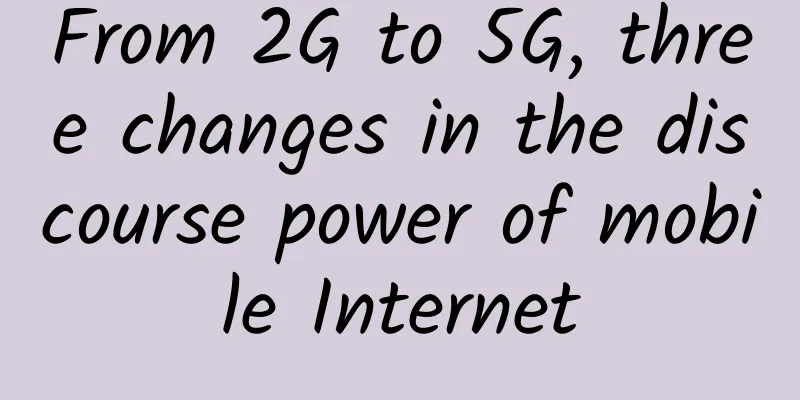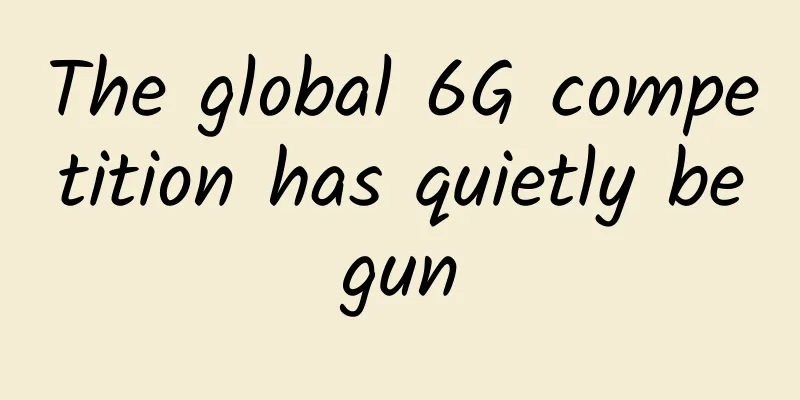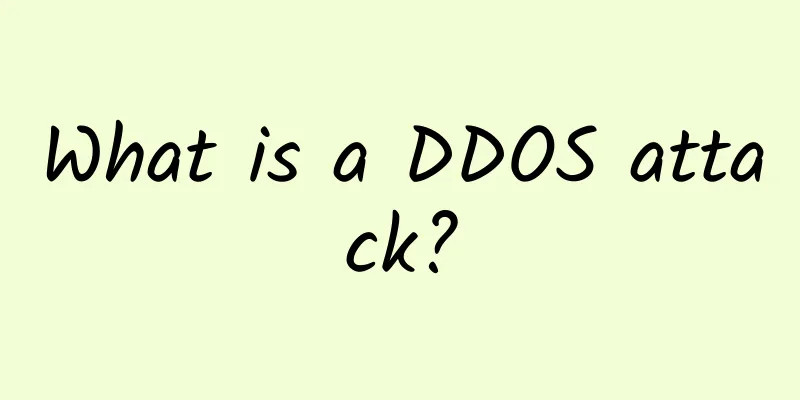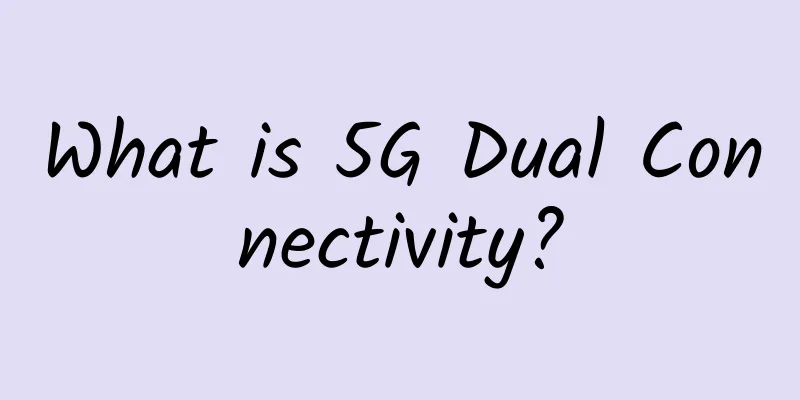From 2G to 5G, three changes in the discourse power of mobile Internet

|
Hans Vestberg, CEO of Verizon, the largest telecommunications operator in the United States, holds an iPad with a flight map showing a bird's-eye view of the ground on the screen. More than 400 kilometers away in Los Angeles, a drone takes off under his remote control. The screen shows the real-time footage taken by the drone, and the status bar in the lower left corner shows that the connection speed of the 5G network reaches 900 Mbps. This is the content of Verizon's demonstration at the Consumer Electronics Show (CES). The big screen quickly flashed the keywords "healthcare", "classroom", "games", "journalism" and "city", and finally stopped at the words "Change Everything".
According to Vestberg, 5G will change everything. It is "a quantum leap after 4G and the fourth industrial revolution." 5G is the most important event at CES. From operators to chip companies, from mobile phone manufacturers to automobile companies, they are all enthusiastic and show the 180,000 audience what the technology industry is best at: staying optimistic about the future. At the end of 2018, four US operators, Verizon, AT&T, Sprint and T-Mobile, repeatedly mentioned 5G in their respective quarterly earnings reports and conference calls, an average of 28 times each. Qualcomm, a chipmaker that has been in a slump in the past few years, mentioned 5G 38 times in its earnings conference calls. Huawei invested 5 billion yuan in 5G research and development in 2018 in order to obtain more base station construction orders. By December, Huawei claimed to have obtained 25 contracts and shipped more than 10,000 5G base stations. In addition to Apple, mainstream smartphone manufacturers including Samsung, OPPO, Vivo and Xiaomi have announced the launch schedule of 5G mobile phones. In 2019, 5G will be the core selling point of new mobile phones.
But what exactly is 5G? Leaving aside all the technical details, it is just a mobile network with faster transmission speed and faster response speed. Justin Denison, senior vice president of Samsung, said, "You don't have to remember to download a season of your favorite TV show before going to the airport. You can download (a movie) in a few seconds while waiting in line to board the plane." Qualcomm's explanation is similar. The peak download speed of 5G can reach 4500 Mbps, and the initial median speed is 1400 Mbps, which is about 20 times the current 4G network speed. "It only takes 17 seconds to download a regular-sized movie with 5G, while 4G takes 6 minutes." It's like the broadband package advertisement ten years ago. Speed is never a good enough reason. The point is what to do with faster speed. Different companies have different ideas about this, but no one has figured out what this is for consumers yet. Intel is talking about smart factories and robots, VR/AR, digital surveillance and security, which have little to do with consumers. Ford announced that all new vehicles from 2022 will be equipped with 5G connectivity, allowing vehicles to communicate wirelessly with each other and between vehicles and traffic lights. Qualcomm said that with 5G, virtual reality devices can be wirelessly connected to other machines, and it will be easier to develop eyepieces the size of glasses. But who cares about virtual reality? No one cared at the Consumer Electronics Show. Verizon has invested $1 million to launch a "5G Challenge" in the hope that developers will help them explore specific applications of 5G. This is equivalent to saying that even though Verizon has invested hundreds of millions of dollars in 5G, it does not understand what 5G can bring. In fact, a similar situation occurred once on the 3G network. 3G is the most important network upgrade, but operators have spent 7 years without finding the direction Looking back now, 3G is the most important upgrade of mobile networks. It makes all the Internet services you are familiar with today possible. But it took 7 years from the time operators started to build networks and tell 3G stories to the time it really became useful. By 2006, the entire industry was reflecting on whether the money was spent in the wrong place. Although people were still using Nokia feature phones, Europe had already begun to deploy 3G infrastructure in 1999. In March 1999, Finland became the first country in the world to issue a 3G operating license, earlier than Japan in 2001 and the United States in 2004. 3G describes a future of mobile Internet access. The mobile telecommunications industry began with voice calls. The first generation of mobile communication technology (1G) in the 1980s was a cellular wireless telephone system based on analog technology that could only transmit voice. The 2G network in 1990 had the ability to transmit data. In short, the 1G era brought mobile calls, and the 2G network added text messages and the ability to download content from the Internet. The biggest feature of 3G is the increase in data download speed, which brings data transmission-based services - email, web browsing, and sending pictures. The network download speed of 3G in its early stage reached 300k-2Mbps, which is more than 30 times faster than 2G. Fascinated by such stories, Europe's enthusiasm for 3G continued to grow, and by 2000, 13 countries had followed suit and obtained 3G licenses. But the 3G competition soon turned into a bubble under the license trading. In 2000, the British government sold five 3G network licenses by auction for a total of 22.5 billion pounds (38.5 billion euros). This was equivalent to 2.3% of the UK GDP that year, four times more than the media expected at the time, and the first license was worth more than 4 billion pounds. Countries such as Germany, Italy, France and the Netherlands also began to follow suit and made a fortune from license auctions. Germany once set a single auction record of 50.5 billion euros. A typical example is that in 1991, Li Ka-shing's Hutchison Whampoa acquired the British mobile phone company Rabbit for HK$10 billion, reorganized and renamed it Orange in 1993 and listed it in the UK in 1996. Catching up with the 3G license bubble, Li Ka-shing sold 44.8% of Orange's shares to France Telecom in 1999, making a profit of HK$110 billion. The purchase of licenses has already consumed huge costs, and operators are heavily in debt, which has seriously delayed the real progress of 3G. In the early 21st century, the US technology bubble gradually spread to Europe, and the price of licenses once fell. Companies that have announced plans to commercialize 3G have announced delays, and some operators in Denmark, Luxembourg, Sweden, Norway, Portugal, Finland and other places have even abandoned or withdrawn from 3G projects. Operators have no choice but to return to low-cost voice services. Vodafone spent 34 billion US dollars to buy the license, but after 6 years, its market share in the European market was only 3.8%. In 2005, it had to adjust its market strategy and lower its tariffs. But the more fundamental reason is that people have not found a reason to use 3G networks. By the end of 2005, Nokia had become a giant in the mobile phone industry, selling more than 80 million mobile phones per quarter and controlling 35% of the global market share. Motorola, Samsung, and LG, which followed Nokia, all sold non-smart phones for text messaging and making calls. A 2006 New York Times article said, “Despite the hundreds of billions of dollars spent by carriers on licenses, people use their phones today for the same purpose they did in 2000 — to make calls.” The article attributes the failure of 3G in Europe to the lack of sufficient "killer applications", the so-called high-speed wireless Internet service not reaching users, and the operators overestimating the popularity of 3G. "The operators misjudged the value of the 3G licenses, and the government in charge of the auction basically blackmailed the industry. It was a failure from top to bottom," said Joachim Dreyer, former CEO of German operator Debitel, in an interview for this article. The "failure" here refers to telecom operators. The telecom operators still have the final say on how to innovate in the communications industry, and they also grab the most lucrative profits in the industry. In 2004, China Mobile and Verizon were already companies with market capitalizations of more than $100 billion each, far exceeding Nokia, the largest company in the mobile phone industry. Operators had already established a complete set of Internet services in the 2G era, but their imagination has never exceeded that time. The bubble in the early 3G era was directly related to the monopoly of operators. Operators had already established a complete set of Internet services in the 2G era, but failed to continue to the 3G era. You may have heard of "Mobile Treasure Box", which allows users to open an interface on their mobile phones to deduct phone bills to purchase applications, ringtones, and games - ringtones and games account for the majority. In the operator's revenue classification, they are all called "value-added services". In China Mobile's advertisement, the treasure box is "like a supermarket", with four categories of games, entertainment, business and life, arranged on the "shelves" for people to freely choose and download. In 2005, China Mobile's revenue and profits both grew by double digits. The value-added services provided by Baobao Box grew by more than 50%. Before the App Store appeared, this was the app store in the 2G era. Operators completely dominated this effective basic service - the treasure box was pre-installed on the mobile phone, and the purchase of ringtones and games was directly charged through the phone bill, and the operators took 70% of the content revenue. Many of the Internet services we often use today were actually provided by operators at the time:
What all these services have in common is that at the time, mobile networks were too slow and mobile phone performance was too poor, so operators relied on their own processing at the server and transmission stages to make these services available. It's not easy to use, but it's usable and profitable. This is why all mobile phone companies at that time had to listen to the operators and adjust the design of mobile phones and the software on the phones according to their needs, and Nokia was no exception. iPhone 3G made 3G truly popular, and the profits of this industry began to leave the operators. In 2007, at the launch of the first generation iPhone, Steve Jobs used his phone screen to open the New York Times, Google Maps, and send emails. Mobile applications, which are now commonplace, were a huge leap forward at the time. Steve Jobs said that the mobile Internet in the past was a simple "baby Internet". The iPhone proved for the first time that a mobile phone could access complete Internet services like a PC.
In the eighth year of 3G construction, the first generation iPhone, which only supported 2G networks, sold 1.39 million units in half a year - this was a huge number at the time. It took almost two years for Android models to sell over a million units. In 2008, the App Market, which came out with the iPhone 3G, allowed mobile phone users to select and download apps through non-carrier channels for the first time. This was a complete experience - developers developed apps, users downloaded and paid for them, and Apple and developers split the profits 70% to 30%. In this process, there was no need to ask the opinions of the carriers. Before Apple, BlackBerry, Nokia and Microsoft all had smartphones, but no one dared to challenge the operators and set up their own app stores. After iPhone 3G, Ovi Store (later renamed Nokia Store) in Nokia's Symbian system, Microsoft's Windows Phone Store, and BlackBerry App World appeared one after another. The most successful ones are Android's Google Play and iPhone App Store. By 2011, Android had become the world's largest operating system, with more than 80 out of every 100 smartphones sold being Android. It can be said that smartphones brought by iPhone and Android are the foundation for the popularization of 3G and the beginning of mobile Internet. After that, all mobile phone services from the 2G era were completely replaced. In February 2009, the chat application Whatsapp was born, and by 2013, 27 billion messages had been sent. SMS was replaced by WeChat, Skype, and FaceTime. Users no longer need to pay for video calls through operators, as long as their phones can access the Internet, whether it is mobile network or Wi-Fi. What makes all this happen is a good product. A good product that can really take advantage of 3G network speed. Facts have proved that a good mobile phone can transcend the restrictions of operators, allowing users to buy it directly without having to consider which network package is more cost-effective. The first generation iPhone took nearly 30% of the US market share in the year of its release, surpassing any mobile phone manufacturer supported by any operator, even though it was not a 3G phone. The disruptive significance of the iPhone lies in its ability to control operators. In the early days of the iPhone, Apple's basic strategy in almost every important market was to find only one local operator to establish an exclusive cooperation for two to three years. In order to ensure the most favorable subsidies and promotion conditions in negotiations, Apple usually did not choose the best operator. For example, AT&T in the United States and China Unicom were both the second-best operators at the time. Each country has several giant operators, but the iPhone only cooperates with one of them, and it is not the largest operator in the country. China Unicom, AT&T in the United States, and Softbank in Japan have been the exclusive sales channel for iPhone for 33, 44, and 39 months respectively. Each operator that sells iPhone has given Apple huge subsidies, but because of the strong appeal of iPhone, they have all attracted a large number of new users to their own networks without exception. Other operators have no choice but to accept Apple's requirements. Because of subsidies, the profits of operators have shrunk significantly. In the first half of 2010, one year after China Unicom won the iPhone cooperation agreement, China Unicom's sales losses from subsidized terminals alone exceeded 3 billion yuan in half a year. Operators have to admit this reality and can no longer decide everything in the communication industry chain. 4G makes Internet services more user-friendly, and the right to speak shifts from mobile phone manufacturers to Internet companies The biggest change from 3G to 4G is still the Internet speed. LTE is the first 4G standard recognized by the International Telecommunication Union and the only mainstream 4G standard. Its download speed can reach 100Mbps, which is much faster than 3G. In 2013, China's Ministry of Industry and Information Technology officially issued 4G licenses. After that, the mobile phone industry itself did not change much. Everyone became like the iPhone, and the main difference in competition was who had a bigger screen and who was cheaper. However, Internet services are being driven to become a huge industry due to faster speeds. If 3G brought Internet services, then 4G has made them completely popular. As of the first half of 2018, the two major application markets, Android and iOS App Store, had revenue of $33.4 billion, and this scale is growing at a rate of 30% every year. In the past 10 years, the two have launched more than 5.1 million applications. In comparison, in 2007, the largest software company Microsoft had a revenue of $16.3 billion a year. With faster internet speeds and cheaper rates, the experience of watching videos and playing online games has been greatly improved. If you look at the revenue rankings in Apple's App Store today, video services are the biggest winners, with 5 of the top 10 being streaming companies, with Netflix ranking first. There is also the gaming industry. Most of the mobile market revenue comes from games. According to a report by App Annie, non-games contributed 65% of downloads in 2018, but only 23% of revenue. With the development of 4G, the right to speak in the communications industry chain has once again shifted. On the one hand, operators have accepted the irreversible loss of status. They need to rely more on mobile phone manufacturers, and subsidies are not a long-term solution. Since 2014, the subsidies provided by operators to mobile phone manufacturers have been greatly reduced. You may still remember the way to buy mobile phones in the 3G era. Operators can set up counters in stores and give away cheap 3G mobile phones for free by recharging phone bills. After that, companies that survived by subsidies, such as ZTE and Coolpad, found it difficult to continue. In the 4G era, the role of operators has completely changed to providing traffic pipelines, even impacting the original voice call business. In the first half of 2016, the Internet traffic of China's three major operators increased by more than 100% year-on-year. More importantly, the contribution of mobile Internet traffic has exceeded that of traditional business, becoming the largest source of income. The era when operators made money from voice, SMS and value-added services is over. Operators have benefited from more and more users and growing traffic revenue. In 2016, China Mobile had 429 million 4G users, with a penetration rate of 51.2%, China Telecom had 90.1 million 4G users, and China Unicom had 72.74 million. However, the unit price of traffic is getting lower and lower, and shopping and video playback based on traffic are the biggest revenue sources, but these have nothing to do with operators. The same is true for mobile phone manufacturers. After 10 years of golden growth, they began to decline in 2017. At the same time, Internet companies continue to grow. In 10 years, people have become accustomed to Internet services, so even though mobile phone shipments have not increased, the global mobile application market's downloads and revenues still maintained double-digit growth in 2018. People are increasingly dependent on their phones. According to a report from App Annie, the time people spend on their phones has increased by 45% in the past two years since 2016, with 50% of that time spent on social networks. In China, the average mobile phone user spends more than 3.5 hours on their phone every day. The party with the highest profits has always been the powerful party. The recent trend is that Internet service companies are suppressing mobile phone manufacturers. Netflix has decided not to allow new users to purchase through iTunes in order to circumvent Apple's 30% revenue share. Similar incidents have repeatedly put Apple under considerable pressure. WeChat and Apple made news over whether they should take a cut of rewards, and Apple finally compromised. Now, whether Apple can keep 30% of all digital services has become a major lawsuit in the United States. The Android system is even weaker. Google now allows developers to bypass the Play Store's payment system and directly point to any payment method where charges are required in the application. Google does not participate in the profit sharing. While Apple's market value has shrunk by a quarter due to the poor sales of the new iPhone, Netflix's stock price has risen by 50% in the past year, and Amazon has become the world's most valuable company, which is $90 billion higher than Apple today. Operators, chip companies, and mobile phone manufacturers all regard 5G as a lifeline, but they are no longer a decisive force. From operators to chip manufacturers to mobile phone companies, investment in 5G is beneficial to every link, and 5G has become the best solution to solve the dilemma. After 10 years of growth, the mobile phone industry has stopped, and new reasons to stimulate users to change their phones are scarce. IHS's analysis predicts that the price of 5G mobile phones will be 20% higher than that of non-5G mobile phones after they are launched on the market. Lei Jun said in an interview that 5G will stimulate new demand in the mobile phone market and Xiaomi phones will increase in price. This also applies to all mobile phone manufacturers. Operators hope to use 5G to bypass their dependence on mobile phone manufacturers. Whether it's the remote-controlled drone demonstrated by Verizon, or China Mobile's use of 5G to enhance security monitoring and the Internet of Vehicles in cooperation with SAIC, or China Telecom's use of 5G to transmit high-definition virtual reality signals... operators all want to take advantage of the relationship between 5G and things other than mobile phones. However, among all the assumptions, no one can still answer what the use of 5G will be for consumers. 4G already allows you to make video calls and watch video programs smoothly. As for "downloading a movie in a few seconds", how much practical value does it have before streaming video becomes mainstream? As BayStreet Research analyst Cliff Maldonado told the Wall Street Journal, “When it comes to browsing Facebook and checking email, you won’t notice any difference on 5G.” In 2019, 5G will not come too fast. 4G caught up with an era of growth. When the wireless communication standard was upgraded to LTE in 2011, the annual growth rate of smartphones exceeded 60%. However, according to IDC's forecast, this rate will only be 1.4% in 2019. What exactly is 5G good for consumers? This is related to the speed at which the next generation of mobile networks will be popularized. Operators, mobile phone companies, and chip companies have been exploring this question for years. But they may not be the ones who can finally answer this question. Mapping: Zhou Shaohong, Data compilation: Luo Cong Title image from: Pixabay, Visual China |
<<: Ruijie Smart Town E-Day Tour
>>: Principles of nine cross-domain implementation methods (full version)
Recommend
Choosing a PoE Standard for Your Design: PoE, PoE+, and PoE++
Power over Ethernet standards have important diff...
ZJI: Hong Kong Kwai Wan cluster server is online, bandwidth upgraded to 2C segment 120 IP monthly payment from 1120 yuan/month
ZJI has newly launched the Hong Kong Kwai Wan Dat...
Does eSIM have a big impact on mobile network operators?
The number of cellular Internet of Things (IoT) c...
Synopsys: Reducing 5G attack surface and making good use of technology "double-edged sword"
New technologies are often a double-edged sword, ...
Huawei and Standard Chartered Bank collaborate to create IoT solutions to expand trade finance ecosystem
October 10, 2018 Shanghai - Huawei and Standard C...
Key breakthrough in quantum internet! Pan Jianwei's team breaks new record, entanglement distance is enough to connect two cities
Just now, good news came from quantum entanglemen...
If you are in the communications industry, you will be out if you don’t understand these nine 5G issues
China's 5G era has arrived as promised! The f...
GSMA releases a white paper on 2G/3G network decommissioning experience in Asia Pacific to help operators reduce costs and increase efficiency, and move forward with ease
With the popularity of smartphones and the rapid ...
The Ministry of Industry and Information Technology and the National Development and Reform Commission released seven 5G innovation and application promotion projects
[[319142]] Recently, in order to accelerate the i...
CloudSilk: German AS9929 line 500Mbps large bandwidth starting from 216 yuan/year
A friend of mine was looking for a host with AS99...
Finally someone explained traffic operation clearly
[[428404]] This article is reprinted from the WeC...
Canada to launch 3500MHz 5G spectrum auction
According to foreign media reports, Canada will l...
Is your home router safe? Tests on 18 routers tell you...
Fearing Wi-Fi radiation, parents asked schools to...
HostKvm: Hong Kong CTG bandwidth/traffic upgrade 20% off $7.6/month-2G memory/40G hard disk/30M bandwidth
HostKvm has upgraded the bandwidth and traffic of...









